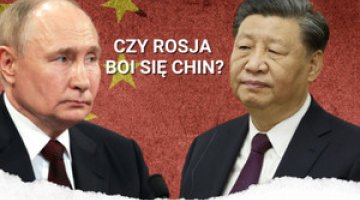Russian arms to Assad
Last week, there were reports in the pres s that Russia had supplied technologically advanced missiles to Syria. These deliveries, together with the presence of the Russian Navy off the Syrian coast, are an expression of the Kremlin’s policy of supporting Damascus in its battle with the armed opposition, and of its resistance to interference in the conflict by the West, Turkey and the Arab countries.This policy is a result of the fears in the Kremlin, after the mass demonstrations at the turn of 2012, that Russian society may mobilise against the existing system of government, together with a sense of the relative growth of Russia’s ability to act on the international stage. These concerns mean that the Kremlin is increasingly interested in stopping another wave of social protests in the Arab world which threaten to topple yet more authoritarian regimes. However, this sense of the relative strengthening of Russia’s international position has meant that the Kremlin is ready to supply arms in order to achieve its aims, contrary to the position adopted by its key international partners such as the United States, the European Union and Turkey.
Russian arms to Syria
The reports of Russian arms deliveries to Damascus refer to two types of guided missiles, the anti-aircraft S-300 series and the anti-ship Yakhont series. 96 S-300 launchers have been supplied to four air defence battalions; this contract was signed back in 2010, and the first media reports of their delivery to Syria came in the autumn of 2011.
On 15 May the Russian newspaper Nezavisimaya Gazeta, citing a military-diplomatic source, confirmed that the missiles have already been installed in Syria and that they have been accompanied by Russian instructors. The Yakhont missiles, used for coastal defence, were contracted for in 2007, and deliveries of them began in 2011. Last week the American press, citing intelligence sources, reported that Russia had begun to supply Syria with a recently improved version of the missiles (the contract allegedly provided for the supply of 36 launchers and 72 missiles).
It is impossible to verify the accuracy of these press reports. Western diplomatic sources have confirmed only that Russia has recently stepped up its arms supplies to the Syrian government forces. The media reports on the supply of the S-300 and Yakhont missiles were not denied by the Russian foreign ministry, which has stressed that Russia is only fulfilling contracts which it signed long ago, and is providing defensive systems which are not suitable for use against anti-government forces, but which serve to defend Syria against possible external military intervention. This also seems to be the reason why Russia is keeping a group of warships in the eastern Mediterranean; at present, it has 14 ships there (three combat ships, four landing craft and seven auxiliary vessels).
Domestic political motives behind the Kremlin’s policy on Syria’s internal conflict
Russia’s policy towards the Syrian crisis, part of which includes supplying arms to the government of Bashar al-Assad, results from a whole range of factors concerning both Russia’s domestic and foreign policies. Firstly, Russian diplomacy strongly defends the principle of state sovereignty, and does not want another example of Western military intervention in an internal conflict (following the examples of Kosovo and Libya). The Russian ruling elite is concerned that such a precedent could be used against it in the event that mass anti-government demonstrations in Russia led to bloodshed.
Although an outside observer might think that such concerns are entirely groundless, at least some members of the Russian political establishment seem convinced that Washington tried to bring about such a scenario in Russia at the turn of 2012. Such a conviction was expressed by the deputy chairman of the State Duma and deputy secretary-general of the main pro-Kremlin party United Russia, Sergei Zheleznyak, speaking on the popular ‘Special Correspondent’ programme on the state TV channel Rossiya on May 14.
From the point of view of the Russian establishment’s internal political interests, maintaining the Assad regime in power would be the best option. From the Kremlin’s point of view, the consequences of the fall of another dictator could have only negative consequences. The seizure of power by moderates and the establishment of a pluralistic and democratic system of government in Syria could boost opposition sympathies in Russian society (by showing that even in Syria it is possible to move away from authoritarian rule), and in particular among Russian Muslims. In turn, the seizure of power by Islamist radicals (Salafists) would pose the danger of boosting radical Islam in Russia’s Muslim communities. Over the past few years, the Russian government has begun to fear the rise of radical Islam, not only in the North Caucasus and Central Asia as before, but now also in the Volga region (Tatarstan, Bashkortostan) and among the millions of Muslim immigrants from Central Asia currently living in urban centres in central and northern Russia.
The conflict’s geopolitical dimension
For Moscow, in addition to the internal political dimension, the Syrian conflict also has a geopolitical dimension. In the conflict between the conservative Islam propagated and supported by Saudi Arabia & Qatar on one side, and Shiite Iran, the Syrian Alawites and Lebanon’s Hezbollah on the other, Russia favours the latter. Over the past twenty years, Moscow has managed to maintain relations with Tehran, which it regards as a pragmatic and reliable partner, uninterested in building up its own sphere of influence in the post-Soviet area at the expense of Russia (as the Russian elite had feared in the early 1990s).
At the same time, the Kremlin seems to regard the Syrian crisis as an excellent opportunity to demonstrate Russia’s growing importance in shaping a new, multi-polar international order, which would also serve to increase the legitimacy of the current regime in Russia. The essence of this new order is the weakening of the United States’ previously dominant role; the European Union’s withdrawal from the role of a major global political actor; and the increasing influence and importance of new, non-Western global (such as China) and regional powers (e.g. Iran). If in the 1990s and the early twenty-first century Russian policy was limited to cautiously contesting the dominant role of the United States (Kosovo, Iraq), now its aim appears to be not just to block the initiatives proposed by Western powers, but also to push through solutions that would favour Russia’s interests above all, and which would be based on a Russian diagnosis of a given geopolitical situation.





